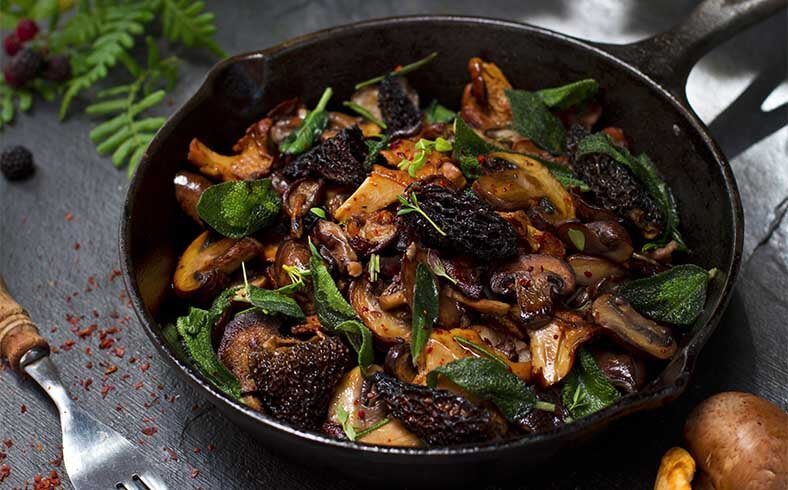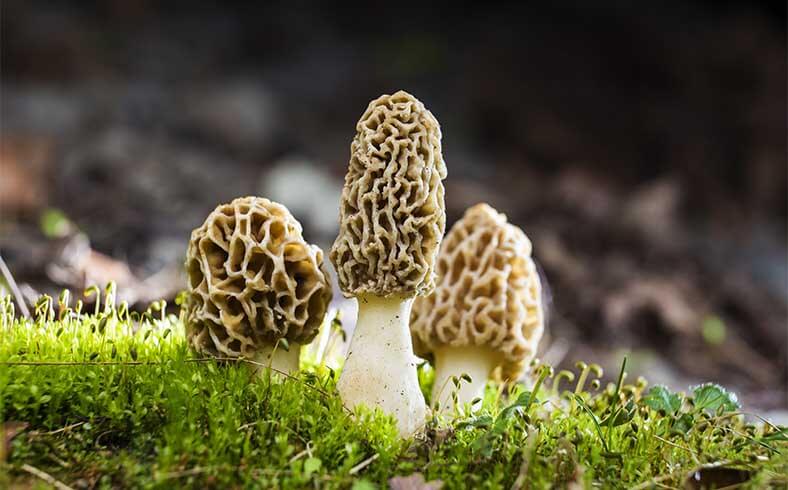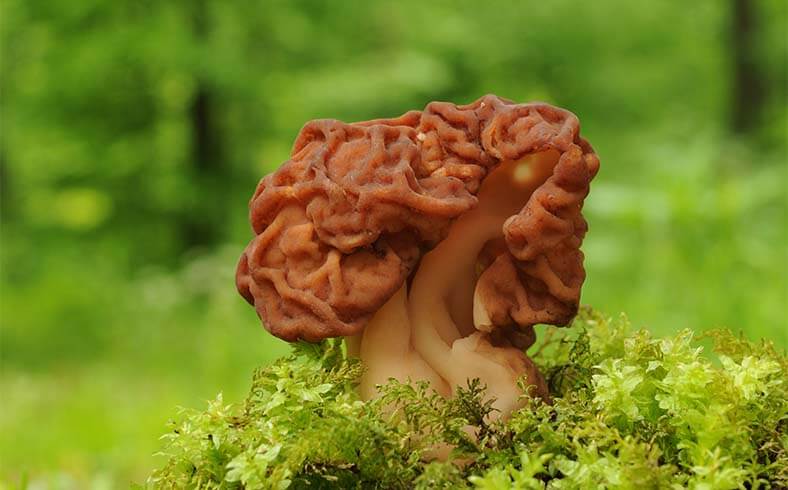The advent of spring heralds the arrival of one of the season’s most tasty morsels: morel mushrooms. These cone-shaped fungi begin to crop up from the warming soil of forest floors across the country from mid-March through as late as June depending on local conditions and climate.
Morel-mushroom hunters are a devoted and resourceful band of hunter-gatherers, studying up on weather patterns, soil and terrain conditions, tree identification and more to nab their prey. And what a trophy it is.

Morel mushrooms are a hunter’s favorite fruit of the field, offering a rich, meaty texture that goes just as well sautéing in a gob of butter over a campfire as the flavorful ingredient in some richer cordon-bleu fare. Of course, knowing what you’re eating as much as where to find it is crucial when it comes to our fungal friends, so make sure to pick the edible stuff over those other mushrooms that could give you cramps and other medical issues.
Read more: Best Morel Mushroom Recipes (TheGreatMorel.com)
Beyond good eating, morels fetch a pretty penny in the local grocery store. An ounce of dried morels can cost upwards of $25, so morel hunters can be in the market for a profit as much as a memorable meal.
Check out the video playlist below from the Ohio Department of Natural Resources for an in-depth look at what to expect on your morel-mushroom hunt.
For a quick primer, here are a few useful field tips to keep you on the scent.
Know your seasons
Obviously, the morel-mushroom season starts in the south and makes its way north as temperatures climb. A good week of daytime temps in the 60s and nighttime temperatures in the 40s will allow the soil to warm to spur the growth of spring’s new crop of morels. Morel hunters will often carry thermometers to test soil temperatures on the ground.
Know your soils
Morel mushrooms like well-drained, loamy soils, so areas around creek bottoms and forest floors close to riverbeds are good places to start your hunt. Areas with disturbed ground can also yield results, including those with plenty downed trees and temporary stream beds from localized flooding over winter.

Know your trees
Morels tend to grow around species like ash, aspen, elm and oak. Given their need for light as well as warmth, look toward the edges of any thickets of trees. Dead and decaying trees as well as other understory debris are prime locations given all the nutrients and moisture these materials return to the soil—and those hungry morel spores.
Know your sunlight compass
Start on south-facing slopes earlier in the season to track down the first morel growths. More sunlight means more optimal growing conditions as spring temperatures climb; later in the season, morel colonies tend to retreat deeper into the woods as well as cooler north-facing slopes where conditions are better suited for growth.

Know what you’re looking for
Of course, different stages of the season bring morels in varying stages of growth. Early-season morels may be no bigger than an acorn nut, so you’ll need keen eyes and a bunch to make a proper meal from your harvest. Later-season morels are obviously bigger with that distinctive yellow, brain-like structure. Seasoned morel hunters will also know what not to look for, including the aptly named false morel—danger!—which covers members of the fungal genus Gyromitra, so-called for the presence of the harmful toxin, Gyromitrin.
Know your limits
No, we’re not talking stamina here. As with other hunting pursuits, know where you’re hunting and be sure to secure permission to conduct your morel-mushroom hunt on private land. If the land is public, understand how many other hunters may be canvassing the land and possibly try to tailor your hunt away from the hordes (check with local park or public-land officials for tips and guidance).
Know your technology
This being the digital era, even the age-old quest of putting food on your table can be greatly enhanced with various apps and other technology time-savers. Some dedicated morel hunters have been known to canvas possible hunting spots in summer and plot in GPS coordinates to make the most of short morel growing seasons.
The website, TheGreatMorel.com, features a sighting map with user-submitted locations across the United States (updates expected in early March), while usueful apps for iOS and Android phones include various mushroom- and tree-identification apps for use in the field. Of course, we’d be remiss not to mention the hundreds, if not thousands of useful morel-mushroom hunting resources available with a simple Google search—so don’t wait to get your spring morel-mushroom hunt started virtually this spring!
Happy hunting! And please share your favorite morel-mushroom hunting tips and recipes in the comments section!
